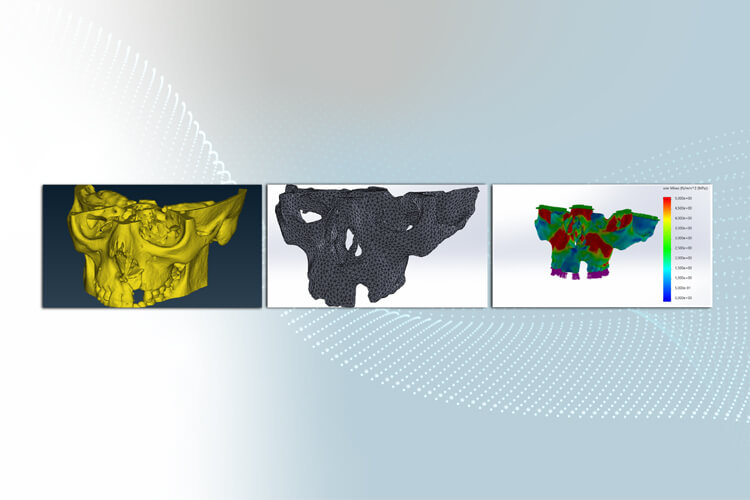Advanced Biomechanical Models for Paediatric Maxillofacial Surgery

The BIOMOD project “Development of advanced biomechanical models for the planning and improvement of surgical practice applied to cleft lip and palate maxillofacial surgery” is one of the projects that has been funded within the call for collaborative projects within the Complementary Plan for Biotechnology Applied to Health – Next Generation.
This multidisciplinary project is being led by Dr Salvador Borrós and Dr Robert Texidó with the Materials Engineering Group (GEMAT) at IQS, in which Dr Guillermo Reyes and Dr Josep Mª Puigoriol, experts in the development of 3D models in finite elements, with the Industrial Products Engineering Group (GEPI) at IQS are also participating, along with medical teams from the Sant Joan de Déu Hospital in Barcelona and the Virgen de las Nieves University Hospital in Granada.
A solution to improve complex paediatric maxillofacial surgery
Cleft palate is one of the most frequent congenital malformations of the head and neck, with an incidence rate of 1 in 700 to 1,000 babies. This defect is manifested by a unilateral or bilateral opening in the upper lip, with different types and severities of impacts. The surgical reconstruction of the different anatomical structures is carried out under strict guidelines by means of an alveolar graft, with the aim of restoring the anatomical continuity of the bone arch to close the oronasal fistulas and give bone support to the nose. Success in the osseointegration of the alveolar implant after surgery.
The biomechanical study of this scenario is very complex, and the current 3D models for surgical planning do not facilitate studying this behaviour in a way that can be related to the aforementioned osseointegration.
The BIOMOD project was created with the purpose of developing advanced biomechanical models of the maxillary area to improve both surgical practice and the implants used in paediatric maxillofacial surgery of cleft lip and cleft palate. The project uses 3D models based on finite elements, obtained through a medical image of patients, which are optimized through the characterization of the viscoelastic behaviour of the human body’s tissues. These models will study the impact of biomechanical parameters in the osseointegration of the implant used in cleft lip and cleft palate surgeries so the level of integration can be controlled through its design at the end of the study.
To achieve this, the multidisciplinary BIOMOD project team has been launched, formed by clinical experts in the maxillofacial field (HSJD, HUVN), experts in engineering calculations and 3D printing with finite elements (GEPI group at IQS), and experts in the characterization and manufacture of biomaterials (GEMAT group at IQS).
This new biomechanical model will make it possible not only to predict the biomechanical behaviour of the region of interest (maxillary zone) for cleft lip and cleft palate surgeries, but can also be used in other maxillofacial interventions by establishing correlations of factors such as osseointegration, surgery time, recovery time, adverse effects of the postoperative process, and so on.
Having an advanced biomechanical model with the characteristics that the BIOMOD project seeks to develop will make it possible to open the door to the design of implants with advanced materials and personalized geometries and facilitate better integration.
The BIOMOD project has been funded by European Union NextGeneration EU financing, under the Recovery, Transformation, and Resilience Plan (PRTR-C17.I1). Complementary Plan for Biotechnology Applied to Health.
RELATED PEOPLE:
RESEARCH GROUP
Materials Engineering
Industrial Products Engineering Group
Chemical & Synthetic Biology for Biotherapies
RELATED PROJECTS
Biomod (Modelos biomecánicos avanzados para la práctica quirúrgica maxilofacial labiopalatina)






